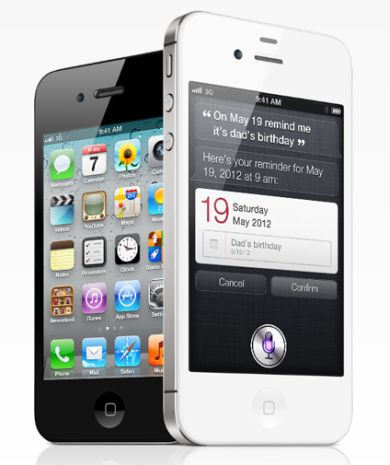Apple And Samsung Lead UK Christmas Smartphone Sales

Apple is dominating smartphone sales in the run-up to Christmas with its various iPhone flavours, followed by Samsung’s Galaxy S II, while Nokia’s Lumia has failed to make a dent in the market
Apple’s iPhone 4S is leading UK smartphone sales in the run-up to Christmas, while Nokia’s launch of the Lumia, its first Windows smartphone range, appears to have left buyers unimpressed, according to new sales figures.
The iPhone 4S, introduced in October, accounted for just under one-quarter of all smartphone sales in the four weeks ending 9 December, according to sales figures compiled by GfK and seen by the Financial Times.
Latest figures
The five iPhone versions were all in the top 15 handsets sold in the first week of December and accounted for 37 percent of sales for that week, according to GfK.
Samsung’s Android-based Galaxy S II also fared well, registering as the No. 2 handset in the week ending 9 December, the FT said.
 RIM’s BlackBerry platform continued to see strong sales in spite of the platform’s ongoing struggle against Google Android and Apple iOS devices. Three versions of the BlackBerry Curve all sold in the top 10 during the first week of December, though the newer BlackBerry Bold 9900 did not crack the top 10 for that week, according to the GfK figures.
RIM’s BlackBerry platform continued to see strong sales in spite of the platform’s ongoing struggle against Google Android and Apple iOS devices. Three versions of the BlackBerry Curve all sold in the top 10 during the first week of December, though the newer BlackBerry Bold 9900 did not crack the top 10 for that week, according to the GfK figures.
Meanwhile, Nokia’s Lumia 800 and 710, launched in October with an advertising campaign rumoured to have cost £20m, did not register in the top 10 of handsets sold through November and December, according to the FT’s report.
The figures confirm the findings of a survey published earlier this month by brokerage firm Exane BNP Paribas, which found that only 2.2 percent of potential European mobile customers intended to purchase a Lumia handset.
Estimates slashed
“With only 2.2 percent of surveyed buyers firmly intending to purchase the Lumia, Nokia’s first flagship Windows Phone is … far behind the current blockbusters, Apple’s iPhone 4S and Samsung’s Galaxy S II,” analyst Alexander Peterc was quoted as saying in a note.
The bad news was compounded by Exane BNP Paribas slashing its sales estimates of the Lumia to just 800,000 units. This is a far cry from its initial “ballpark estimate” of two million users. The brokerage said this compared poorly with the 3.5 to 4 million sales of Nokia’s previous flagship device, the N8 smartphone based on the Symbian operating system, during its first quarter.
Nokia is looking to the Lumia handset and the Windows Phone platform to revive its fortunes in the smartphone market. While the Lumia has seen lacklustre sales in Europe so far, Nokia has yet to launch a Windows handset in the US.
That launch may arrive at the Consumer Electronics Show in Las Vegas next month. Nokia has sent out invitations for a media event ahead of the conference on 9 January with indications that its Windows Phone strategy will be in the spotlight.
Smartphone growth
Smartphone ownership nearly doubled in the UK from February 2010 to August 2011, when it stood at 46 percent, according to Ofcom figures cited by the FT.
Aside from the Lumia launch, 2011 has seen the entry of manufacturers such as Huawei and ZTE into the UK market. Both Chinese companies previously manufactured handsets to be branded by operators, but are now seeking to establish their own brands.